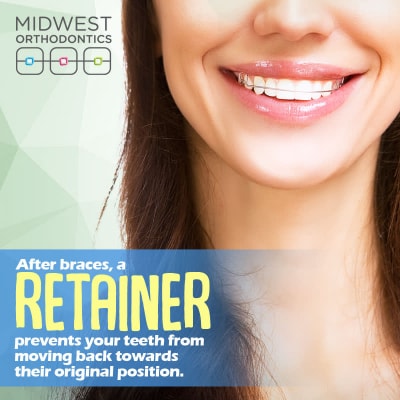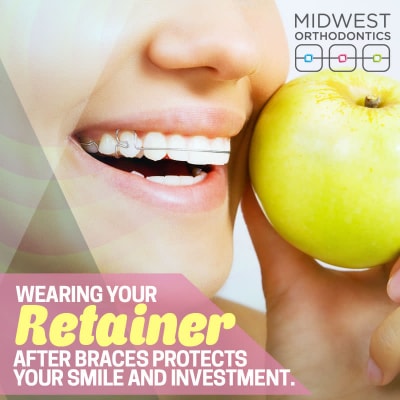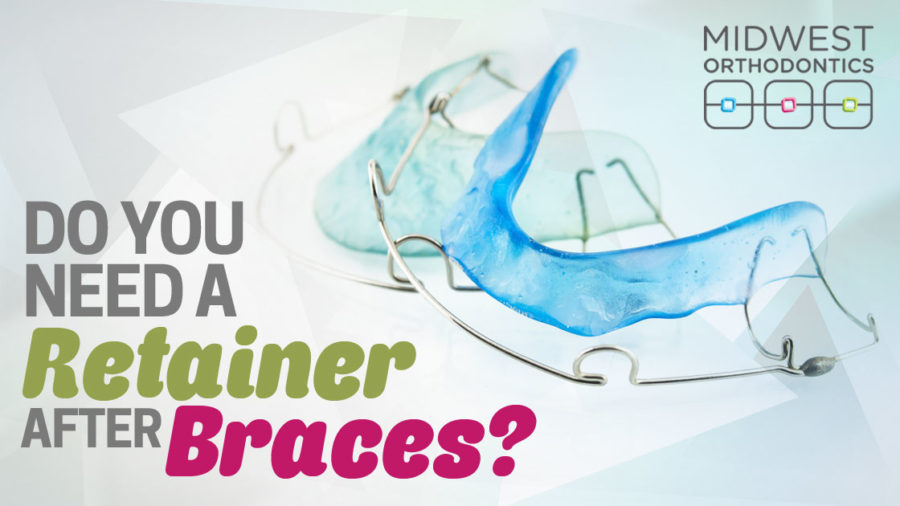For people who have braces, few days match the joy of having them removed. But that feeling of happiness can be interrupted when your Chicago orthodontist tells you that you need to wear a retainer. That’s right, just when you thought you were on the path to dental freedom, you receive another piece of metal or plastic that you need to wear for a prolonged period of time. Retainers are typically only worn at night, but can still cause an inconvenience in your daily life. So, this might leave you wondering: Do I really need that retainer after braces?
Our patients ask this question a lot so we wanted to take a few minutes and walk through what happens to your teeth with and without a retainer, and the different types of retainers you can consider.
What happens if you do have a retainer?
 Braces fundamentally alter the placement of your teeth in your mouth. That’s a big change and one that’s not natural for your body. It takes time for the bones and tissues in your mouth to adjust.
Braces fundamentally alter the placement of your teeth in your mouth. That’s a big change and one that’s not natural for your body. It takes time for the bones and tissues in your mouth to adjust.
As soon as the braces come off, your teeth will try to move back into their original positions. A retainer prevents that from happening by locking in their new positions and continuing the training that the braces began.
This is about more than just cosmetics, too. A retainer helps maintain the bite created by your new alignment. Moving your teeth out of alignment again can place increased strain on your jaw and lead to TMJ and other issues. The last thing you want to happen is to go from one set of dental issues to another.
While a retainer is still an inconvenience, it should not be nearly as cumbersome as wearing braces. And it’s still preferable to wearing braces for a second time if your teeth move out of alignment.
What happens if you don’t have a retainer?
As you now know, the risk of relapse is high for the first year after braces are removed. Not only will your teeth look worse, you could be at risk for larger dental issues down the road.
When your teeth are not properly aligned, it’s easier for bacteria to creep in, which can lead to cavities and other problems. Once you go through the effort straighten your teeth with braces, it seems silly to replace them with dental fillings and crowns.
If you had trouble speaking, chewing, or performing other activities before you got braces, those problems may come back if you do not wear a retainer to keep your teeth in alignment.
After investing all of the time and money into braces, it seems crazy not to wear a retainer. It’s like getting the to two-yard line in football but not driving into the end zone for a touchdown.
Choosing the right retainer
 Our team at Midwest Orthodontics works with all of our patients to help them choose the retainer that will work best for their lifestyle. We will also provide guidance on how long to wear it, and whether it needs to be worn all the time or just overnight.
Our team at Midwest Orthodontics works with all of our patients to help them choose the retainer that will work best for their lifestyle. We will also provide guidance on how long to wear it, and whether it needs to be worn all the time or just overnight.
The answers to those questions depend on age and how much your teeth changed as a result of wearing braces.
We will also help you choose a metal or plastic retainer, whether you need to wear it all the time or part of the time, and how long you’ll need to use it. The answers to all of those questions vary depending on your age, your overall dental health, and how much your teeth moved as a result of having braces.
So yes, a retainer really is necessary after braces for the vast majority of people. It might be a nuisance, but it doesn’t have to be a game changer or ruin the sense of independence you feel after having braces removed.
Contact us today to schedule a free consultation.




Leave a Reply
Your email is safe with us.